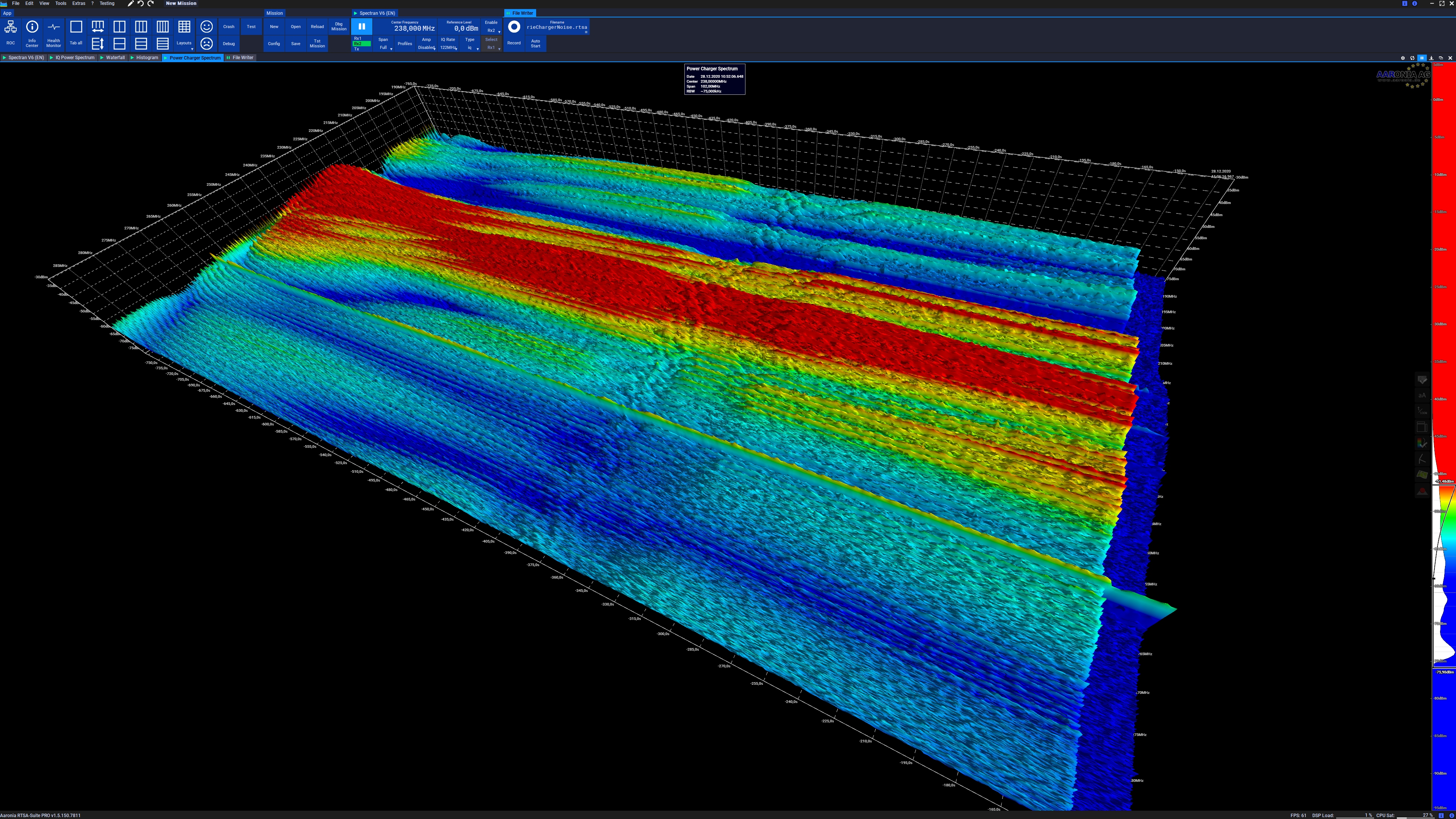|
Audio Analysis
Audio analysis refers to the extraction of information and meaning from audio signals for analysis, classification, storage, retrieval, synthesis, etc. The observation mediums and interpretation methods vary, as audio analysis can refer to the human ear and how people interpret the audible sound source, or it could refer to using technology such as an Audio analyzer to evaluate other qualities of a sound source such as amplitude, distortion, frequency response, and more. Once an audio source's information has been observed, the information revealed can then be processed for the logical, emotional, descriptive, or otherwise relevant interpretation by the user. Natural Analysis The most prevalent form of audio analysis is derived from the sense of hearing. A type of sensory perception that occurs in much of the planet's fauna, audio analysis is a fundamental process of many living beings. Sounds made by the surrounding environment or other living beings provides input to the hearing ... [...More Info...] [...Related Items...] OR: [Wikipedia] [Google] [Baidu] |
Statistical Classification
In statistics, classification is the problem of identifying which of a set of categories (sub-populations) an observation (or observations) belongs to. Examples are assigning a given email to the "spam" or "non-spam" class, and assigning a diagnosis to a given patient based on observed characteristics of the patient (sex, blood pressure, presence or absence of certain symptoms, etc.). Often, the individual observations are analyzed into a set of quantifiable properties, known variously as explanatory variables or ''features''. These properties may variously be categorical (e.g. "A", "B", "AB" or "O", for blood type), ordinal (e.g. "large", "medium" or "small"), integer-valued (e.g. the number of occurrences of a particular word in an email) or real-valued (e.g. a measurement of blood pressure). Other classifiers work by comparing observations to previous observations by means of a similarity or distance function. An algorithm that implements classification, especially in a ... [...More Info...] [...Related Items...] OR: [Wikipedia] [Google] [Baidu] |
Total Harmonic Distortion
The total harmonic distortion (THD or THDi) is a measurement of the harmonic distortion present in a signal and is defined as the ratio of the sum of the powers of all harmonic components to the power of the fundamental frequency. Distortion factor, a closely related term, is sometimes used as a synonym. In audio systems, lower distortion means the components in a loudspeaker, amplifier or microphone or other equipment produce a more accurate reproduction of an audio recording. In radio communications, devices with lower THD tend to produce less unintentional interference with other electronic devices. Since harmonic distortion tends to widen the frequency spectrum of the output emissions from a device by adding signals at multiples of the input frequency, devices with high THD are less suitable in applications such as spectrum sharing and spectrum sensing. In power systems, lower THD implies lower peak currents, less heating, lower electromagnetic emissions, and less core loss ... [...More Info...] [...Related Items...] OR: [Wikipedia] [Google] [Baidu] |
Speech Recognition
Speech recognition is an interdisciplinary subfield of computer science and computational linguistics that develops methodologies and technologies that enable the recognition and translation of spoken language into text by computers with the main benefit of searchability. It is also known as automatic speech recognition (ASR), computer speech recognition or speech to text (STT). It incorporates knowledge and research in the computer science, linguistics and computer engineering fields. The reverse process is speech synthesis. Some speech recognition systems require "training" (also called "enrollment") where an individual speaker reads text or isolated vocabulary into the system. The system analyzes the person's specific voice and uses it to fine-tune the recognition of that person's speech, resulting in increased accuracy. Systems that do not use training are called "speaker-independent" systems. Systems that use training are called "speaker dependent". Speech recognition ... [...More Info...] [...Related Items...] OR: [Wikipedia] [Google] [Baidu] |
Semantic Audio
Semantic audio is the extraction of meaning from audio signals. The field of semantic audio is primarily based around the analysis of audio to create some meaningful metadata, which can then be used in a variety of different ways. Semantic Analysis Semantic analysis of audio is performed to reveal some deeper understanding of an audio signal. This typically results in high-level metadata descriptors such as musical chords and tempo, or the identification of the individual speaking, to facilitate content-based management of audio recordings. In recent years, the growth of automatic data analysis techniques has grown considerably, * Music Information Retrieval * Sound recognition * Speech segmentation * Automatic music transcription * Blind source separation * Musical similarity * Audio indexing, hashing, searching * Broadcast Monitoring * Musical performance analysis Applications With the development of applications that use this semantic information to support the user in ident ... [...More Info...] [...Related Items...] OR: [Wikipedia] [Google] [Baidu] |
Spectrogram
A spectrogram is a visual representation of the spectrum of frequencies of a signal as it varies with time. When applied to an audio signal, spectrograms are sometimes called sonographs, voiceprints, or voicegrams. When the data are represented in a 3D plot they may be called ''waterfall displays''. Spectrograms are used extensively in the fields of music, linguistics, sonar, radar, speech processing, seismology, and others. Spectrograms of audio can be used to identify spoken words phonetically, and to analyse the various calls of animals. A spectrogram can be generated by an optical spectrometer, a bank of band-pass filters, by Fourier transform or by a wavelet transform (in which case it is also known as a scaleogram or scalogram). A spectrogram is usually depicted as a heat map, i.e., as an image with the intensity shown by varying the colour or brightness. Format A common format is a graph with two geometric dimensions: one axis represents time, and the other axis r ... [...More Info...] [...Related Items...] OR: [Wikipedia] [Google] [Baidu] |
Surround Sound
Surround sound is a technique for enriching the fidelity and depth of sound reproduction by using multiple audio channels from speakers that surround the listener ( surround channels). Its first application was in movie theaters. Prior to surround sound, theater sound systems commonly had three ''screen channels'' of sound that played from three loudspeakers (left, center, and right) located in front of the audience. Surround sound adds one or more channels from loudspeakers to the side or behind the listener that are able to create the sensation of sound coming from any horizontal direction (at ground level) around the listener. The technique enhances the perception of sound spatialization by exploiting sound localization: a listener's ability to identify the location or origin of a detected sound in direction and distance. This is achieved by using multiple discrete audio channels routed to an array of loudspeakers. Surround sound typically has a listener location ( sweet sp ... [...More Info...] [...Related Items...] OR: [Wikipedia] [Google] [Baidu] |
Goniometer
A goniometer is an instrument that either measures an angle or allows an object to be rotated to a precise angular position. The term goniometry derives from two Greek words, γωνία (''gōnía'') 'angle' and μέτρον (''métron'') 'measure'. The first known description of a goniometer, based on the astrolabe, was by Gemma Frisius in 1538. Applications Surveying Prior to the invention of the theodolite, the goniometer was used in surveying. The application of triangulation to geodesy was described in the second (1533) edition of ''Cosmograficus liber'' by Petri Appiani as a 16-page appendix by Frisius entitled ''Libellus de locorum describendorum ratione''. Communications The Bellini–Tosi direction finder was a type of radio direction finder that was widely used from World War I to World War II. It used the signals from two crossed antennas, or four individual antennas simulating two crossed ones, to re-create the radio signal in a small area between two loops ... [...More Info...] [...Related Items...] OR: [Wikipedia] [Google] [Baidu] |
Fast Fourier Transform
A fast Fourier transform (FFT) is an algorithm that computes the discrete Fourier transform (DFT) of a sequence, or its inverse (IDFT). Fourier analysis converts a signal from its original domain (often time or space) to a representation in the frequency domain and vice versa. The DFT is obtained by decomposing a sequence of values into components of different frequencies. This operation is useful in many fields, but computing it directly from the definition is often too slow to be practical. An FFT rapidly computes such transformations by factorizing the DFT matrix into a product of sparse (mostly zero) factors. As a result, it manages to reduce the complexity of computing the DFT from O\left(N^2\right), which arises if one simply applies the definition of DFT, to O(N \log N), where N is the data size. The difference in speed can be enormous, especially for long data sets where ''N'' may be in the thousands or millions. In the presence of round-off error, many FFT algorithm ... [...More Info...] [...Related Items...] OR: [Wikipedia] [Google] [Baidu] |
HP200A
The HP 200A was the first product made by Hewlett-Packard and was manufactured in David Packard's garage in Palo Alto, California. It was a low-distortion audio oscillator used for testing sound equipment. It used the Wien bridge oscillator circuit, that had been the subject of Bill Hewlett's Masters thesis. It was also the first such commercial oscillator to use a simple light bulb as the temperature-dependent resistor in its feedback network. The light bulb was an inexpensive and effective automatic gain control that not only kept the oscillator output amplitude constant, but it also kept the oscillator's loop gain near unity. The latter is a key technique for achieving a low distortion oscillator. Earlier, Larned Meacham had used light bulbs in bridge circuits to stabilize and linearize oscillators in 1938. The product code was chosen to give the impression that HP was an established company. Walt Disney bought eight of them for use in the production of ''Fantasia Fanta ... [...More Info...] [...Related Items...] OR: [Wikipedia] [Google] [Baidu] |
Hewlett-Packard
The Hewlett-Packard Company, commonly shortened to Hewlett-Packard ( ) or HP, was an American multinational information technology company headquartered in Palo Alto, California. HP developed and provided a wide variety of hardware components, as well as software and related services to consumers, small and medium-sized businesses ( SMBs), and large enterprises, including customers in the government, health, and education sectors. The company was founded in a one-car garage in Palo Alto by Bill Hewlett and David Packard in 1939, and initially produced a line of electronic test and measurement equipment. The HP Garage at 367 Addison Avenue is now designated an official California Historical Landmark, and is marked with a plaque calling it the "Birthplace of 'Silicon Valley'". The company won its first big contract in 1938 to provide test and measurement instruments for Walt Disney's production of the animated film ''Fantasia'', which allowed Hewlett and Packard to formally esta ... [...More Info...] [...Related Items...] OR: [Wikipedia] [Google] [Baidu] |
Intermodulation Distortion
Intermodulation (IM) or intermodulation distortion (IMD) is the amplitude modulation of signals containing two or more different frequencies, caused by nonlinearities or time variance in a system. The intermodulation between frequency components will form additional components at frequencies that are not just at harmonic frequencies (integer multiples) of either, like harmonic distortion, but also at the sum and difference frequencies of the original frequencies and at sums and differences of multiples of those frequencies. Intermodulation is caused by non-linear behaviour of the signal processing (physical equipment or even algorithms) being used. The theoretical outcome of these non-linearities can be calculated by generating a Volterra series of the characteristic, or more approximately by a Taylor series. Practically all audio equipment has some non-linearity, so it will exhibit some amount of IMD, which however may be low enough to be imperceptible by humans. Due t ... [...More Info...] [...Related Items...] OR: [Wikipedia] [Google] [Baidu] |



